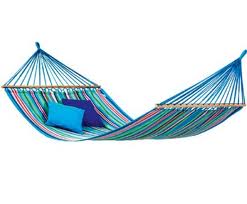 Οι ερευνητές, με επικεφαλής τους Σόφι Σβαρτς και Μισέλ Μουλετάλερ του πανεπιστημίου της Γενεύης, που δημοσίευσαν τη σχετική μελέτη στο έγκριτο περιοδικό βιολογίας “Current Biology”, σύμφωνα με το Γαλλικό Πρακτορείο και τις βρετανικές “Ιντιπέντεντ” και “Τέλεγκραφ”, έκαναν πειράματα με μια ομάδα 12 εθελοντών στους οποίους έκαναν ηλεκτροεγκεφαλογράφημα την ώρα ενός μεσημεριανού ύπνου διάρκειας 45 λεπτών, ενώ άλλα μηχανήματα κατέγραφαν τις κινήσεις των ματιών και των μυών.
Οι ερευνητές, με επικεφαλής τους Σόφι Σβαρτς και Μισέλ Μουλετάλερ του πανεπιστημίου της Γενεύης, που δημοσίευσαν τη σχετική μελέτη στο έγκριτο περιοδικό βιολογίας “Current Biology”, σύμφωνα με το Γαλλικό Πρακτορείο και τις βρετανικές “Ιντιπέντεντ” και “Τέλεγκραφ”, έκαναν πειράματα με μια ομάδα 12 εθελοντών στους οποίους έκαναν ηλεκτροεγκεφαλογράφημα την ώρα ενός μεσημεριανού ύπνου διάρκειας 45 λεπτών, ενώ άλλα μηχανήματα κατέγραφαν τις κινήσεις των ματιών και των μυών. Η ελαφρά αιώρηση του σώματος αποδεικνύεται ότι έχει ευεργετικά αποτελέσματα σε σχέση με ένα ακίνητο κρεβάτι.
Η ελαφρά αιώρηση του σώματος αποδεικνύεται ότι έχει ευεργετικά αποτελέσματα σε σχέση με ένα ακίνητο κρεβάτι.
Οι ερευνητές θα κάνουν νέα πειράματα για να δουν αν η θετική επίδραση της αιώρας διατηρείται και σε μεγαλύτερα χρονικά διαστήματα ύπνου, με την ελπίδα ότι θα μπορούσε να αξιοποιηθεί για την καταπολέμηση της νυχτερινής αϋπνίας ή ακόμα και για τη βελτίωση της μνήμης μετά από ένα τραυματισμό.
Δεν είναι τυχαίο, λένε οι επιστήμονες, ότι προ αμνημονεύτων ετών, οι άνθρωποι νανουρίζουν τα μωρά τους σε κούνιες ή ότι οι ηλικιωμένοι αποκοιμιούνται ευκολότερα σε κουνιστές πολυθρόνες.
 Why do we cradle babies or irresistibly fall asleep in a hammock? Although such simple behaviors are common across cultures and generations, the nature of the link between rocking and sleep is poorly understood [1,2]. Here we aimed to demonstrate that swinging can modulate physiological parameters of human sleep. To this end, we chose to study sleep during an afternoon nap using polysomnography and EEG spectral analyses. We show that lying on a slowly rocking bed (0.25 Hz) facilitates the transition from waking to sleep, and increases the duration of stage N2 sleep. Rocking also induces a sustained boosting of slow oscillations and spindle activity. It is proposed that sensory stimulation associated with a swinging motion exerts a synchronizing action in the brain that reinforces endogenous sleep rhythms. These results thus provide scientific support to the traditional belief that rocking can soothe our sleep. La Casa De Hamacas- Athens Greece .
Why do we cradle babies or irresistibly fall asleep in a hammock? Although such simple behaviors are common across cultures and generations, the nature of the link between rocking and sleep is poorly understood [1,2]. Here we aimed to demonstrate that swinging can modulate physiological parameters of human sleep. To this end, we chose to study sleep during an afternoon nap using polysomnography and EEG spectral analyses. We show that lying on a slowly rocking bed (0.25 Hz) facilitates the transition from waking to sleep, and increases the duration of stage N2 sleep. Rocking also induces a sustained boosting of slow oscillations and spindle activity. It is proposed that sensory stimulation associated with a swinging motion exerts a synchronizing action in the brain that reinforces endogenous sleep rhythms. These results thus provide scientific support to the traditional belief that rocking can soothe our sleep. La Casa De Hamacas- Athens Greece .
Summary
 Why do we cradle babies or irresistibly fall asleep in a hammock? Although such simple behaviors are common across cultures and generations, the nature of the link between rocking and sleep is poorly understood [1,2]. Here we aimed to demonstrate that swinging can modulate physiological parameters of human sleep. To this end, we chose to study sleep during an afternoon nap using polysomnography and EEG spectral analyses. We show that lying on a slowly rocking bed (0.25 Hz) facilitates the transition from waking to sleep, and increases the duration of stage N2 sleep. Rocking also induces a sustained boosting of slow oscillations and spindle activity. It is proposed that sensory stimulation associated with a swinging motion exerts a synchronizing action in the brain that reinforces endogenous sleep rhythms. These results thus provide scientific support to the traditional belief that rocking can soothe our sleep. La Casa De Hamacas- Athens Greece .
Why do we cradle babies or irresistibly fall asleep in a hammock? Although such simple behaviors are common across cultures and generations, the nature of the link between rocking and sleep is poorly understood [1,2]. Here we aimed to demonstrate that swinging can modulate physiological parameters of human sleep. To this end, we chose to study sleep during an afternoon nap using polysomnography and EEG spectral analyses. We show that lying on a slowly rocking bed (0.25 Hz) facilitates the transition from waking to sleep, and increases the duration of stage N2 sleep. Rocking also induces a sustained boosting of slow oscillations and spindle activity. It is proposed that sensory stimulation associated with a swinging motion exerts a synchronizing action in the brain that reinforces endogenous sleep rhythms. These results thus provide scientific support to the traditional belief that rocking can soothe our sleep. La Casa De Hamacas- Athens Greece .
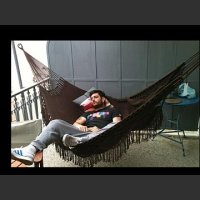

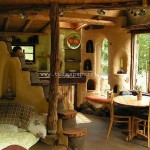

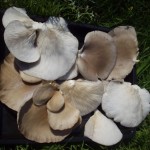



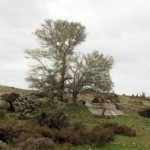


Κανένα σχόλιο